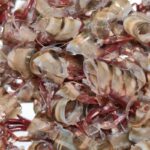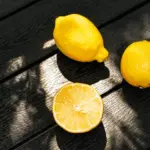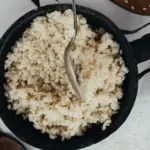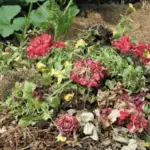Pistachio nuts are a tasty and healthy snack. The nuts also appear in several recipes. Along with their deliciously sweet taste, pistachios are a great way to add protein and fiber to your diet.
There are undeniable benefits to eating pistachios, but what do you do with the shells? Can you compost pistachio shells, or do they need to go in the trash?

Can You Put Pistachio Shells in Compost?
Pistachio shells are compostable. While the nuts nourish your body, the shells provide nutrients for your garden plants.
You can skip feeding your plants with chemical fertilizers, relying on the pistachio shells and other materials in the compost. Not only are you saving money by composting nutshells, but you are also doing something beneficial for the environment.
Unlike some compostable materials, pistachio shells take a while to break down. The longer decomposition rate helps keep the compost from becoming too heavy, making it easier for you to aerate the pile.
Another benefit you get from composting pistachio shells is water retention. The shells absorb moisture. Your compost stays moist without becoming water-logged.

How to Compost Pistachio Shells
Composting pistachio shells only involves a couple of steps. You can toss the shells straight into the compost pile, but it’s not recommended.
Pistachio, and other shells from other nuts, take a while to decompose.
Your compost may not be ready for use when you need to fertilize your plants, but you can speed up the process.
Nutshells are rich in carbon and go in your brown layer. It’s the same layer you use to add materials like wood pulp, twigs, leaves, and coffee grinds, to name a few items.
Before tossing the pistachio shells in your compost, it’s a good idea to soak them in water for several hours. It softens the shells, making them easier to break down. You can even dump the water into the pile. You want to keep the compost moist for a few days after adding new material.
Don’t forget to alternate between green and brown layers. You also want to aerate the compost every few days for the next several weeks. It helps keep the internal temperature up, ensuring the compost is ready for your garden.
You can also crush the shells before composting, though it’s still a good idea to soak the pieces in water before adding them to the pile.

Not All Pistachio Shells Go In Compost
You can put pistachio shells in compost, but some varieties you may want to toss in the trash.
It’s not a good idea to put salted pistachio shells in compost. Adding salt to compost can kill the beneficial bacteria and microorganisms that break down the organic material.
Too much salt in your compost not only delays decomposition but can also contaminate your garden soil. Excess salt throws off the soil’s pH level, causing it to become acidic.
When the soil acidity gets too high, it can kill garden plants and even your lawn.

Why You Should Compost Pistachio Shells
Pistachio shells do break down over time in a landfill, but it doesn’t mean you shouldn’t compost them.
Nutshells release minuscule amounts of methane gas that can contribute to global warming. The goal is to reduce the amount of methane in the atmosphere, and one way is by composting your pistachio shells.
Composting pistachio shells also means fewer chemical fertilizers are entering the ground.
How Long Does it Take for Pistachio Shells to Decompose?
Pistachio shells take a while to decompose in compost. When you toss in whole shells, it can take between two and three years for them to break down.
It’s also one of the reasons why want to avoid tossing pistachio shells in the trash. The shells sit in landfills for years, releasing methane gas.
When you add crushed and soaked pistachio shells to a healthy compost heap, the decomposition rate dramatically increases.
On average, pistachio shells in compost take around eight months to a year to break down.

Can You Compost Pistachio Shells Indoors?
Compost piles can take up a lot of valuable yard space that not everyone can spare. Some people also only use compost for their indoor plants.
Indoor composting bins are one option. They are convenient and simple to use. You follow the same basic steps as outdoor composting, only on a smaller scale. The main downside to an indoor composting bin is the occasional odor.
Another indoor composting option is to invest in worms. It eliminates any smells you get from a composting bin. It’s also extremely easy to set up, and it’s also inexpensive. You are only paying for the worms, and the little wigglers are also easy to find.
Red worms work best for indoor composting, but you can research other varieties. You will also need a few supplies,
- Bedding material for the worms. You can use leaves, shredded cardboard, paper, and even old egg cartons. Avoid any materials that contain Styrofoam or plastic. The same type of green and brown materials found in outdoor piles are used for indoor composting.
- Add a layer of garden soil to the shredded paper and cardboard. Keep the materials moist throughout the composting process.
- The next step is adding the worms. Create a hole in the center of the bedding material for the worms to borrow.
Now, it’s time to feed your new friends. Go ahead and add your pistachio shells, and other composting material. The worms will take care of the rest.
It should only take a little over a month for your compost to be ready for use.

Conclusion
You can compost pistachio shells. It also benefits the environment. You are reducing the amount of methane in landfills while feeding your plants without chemical fertilizers.
Don’t forget that salted pistachio shells do not go in compost. You don’t want to unbalance the soil’s pH level by turning it acidic.
Crushing and soaking the shells dramatically speeds up decomposition, ensuring the compost is ready for your garden.






